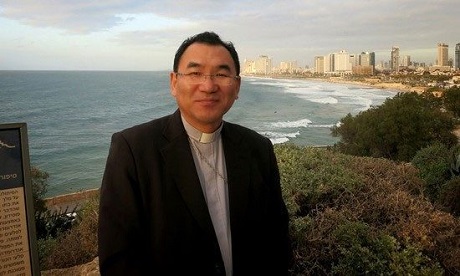Despite the difficulties evangelisation in Japan presents, the Catholic Church still finds ways to proclaim the Gospel, says Tokyo’s Archbishop Isao Kikuchi.
He says it’s been difficult for the Church to move into mainstream Japanese society, which has faced persecution and genocide since 1549.
“In Japanese society, it is difficult to find tangible success in missionary activities,” he says.
The Catholic schools’ foreign language education, helped and was a powerful tool for cross-cultural pollination after World War II.
Foreign languages were in demand for high-paying positions in international business and politics.
However, over the years English education has become compulsory in most schools. In addition, the country is “overflowing” with foreign-language crammers known as eikaiwa.
These two factors have largely killed the foreign language classes that were once a staple of Catholic missionary activity.
Furthermore, Kikuchi says the country’s nominally Catholic schools are beginning to abandon cultural education through language instruction.
“A Catholic school may be the place to meet many young people, but unfortunately … it has not become a place for missionary activities.”
Schools have historically been Catholicism’s last strong foothold in evangelisation in Japan. Nonetheless, Catholic high schools and universities have endured and even strengthened in Japan, even though Catholicism is waning.
Catholic universities are still greatly respected today.
However, Kikuchi says that this ongoing prestige has come with a hefty cost.
“While the schools should be independent from national politics, unfortunately they are tied up with subsidies from the country, and thus they are gradually losing their uniqueness, with only the name ‘Catholic’ remaining,” he said.
“Many priests, religious and the laity are completely losing their involvement with them.”
The Church in Japan has also helped in recent disaster relief projects, including the huge 2011 earthquake and tsunami which Kikuchi speaks of as ” works of mercy”.
While he acknowledges works of mercy might not lead immediately to baptisms, he hopes those touched by the Gospel spirit would be led to the Church.
The presence of foreign Catholics in Japan is the Church’s second most powerful evangelization tool, Kikuchi says.
Among these are 250,000 Filipinos, who with their families make up large portions of Japan’s laity, attending masses and integrating into religious communities in the towns and countryside.
Encouraging foreign nationals to become aware of their missionary vocation as Catholics is a priority, Kikuchi says.
“Pastoral care for foreign nationals in the Japanese church is not merely a service to welcome [guests], but rather a duty to make them aware of their vocation as missionaries.”
Source
- Catholic News Agency
- Image: Vatican News
